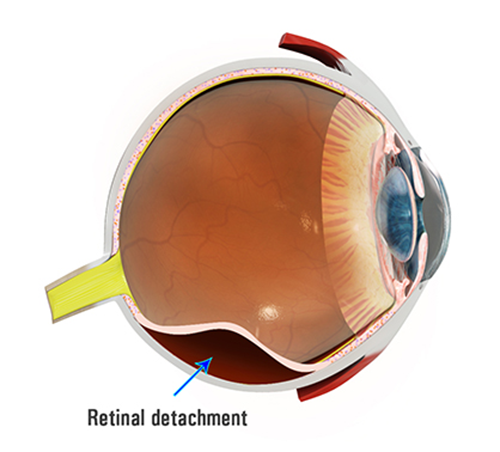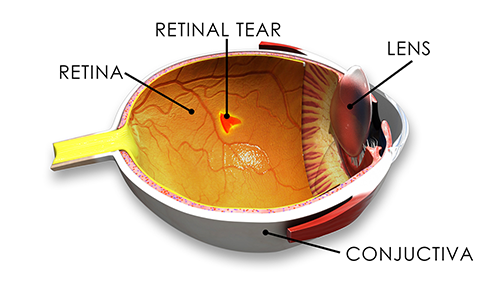Posterior Vitreous Detachment
The middle of the eye is filled with a jelly like substance known as vitreous, which is responsible for giving support and structure to the eye. It is normally anchored to multiple on the retina, and a posterior vitreous detachment occurs when this jelly pulls away from the back of the eye. As we age the vitreous becomes less solid and more jelly like which increase the chances of the microfibers holding the vitreous jelly in place to break and cause the jelly to come away.
Most common symptoms of a PVD include:
- Flashing lights
- Floaters
- A thin film or curtain moving across the visual field
Some common risk factors include shortsightedness/myopia, previous eye surgeries, diabetes and trauma to the eye. For most people with a posterior vitreous detachment, there is no intervention required as there often no vision loss involved. The visual signs of flashes and floaters eventually resolve and become less noticeable over time.
In some situations if the vitreous pulls away from the retina too hard naturally or from things like trauma, it cause issues like a retinal tear or detachment.
Retinal Tear and Detachment
Retinal detachment is where the thin layer of cells that lines the inside of the back of the eye (retina) develops a tear and starts to lose its adhesion to its blood supply. The retina then ceases to function and urgent surgery is indicated to re-attach it to prevent permanent visual loss. If a retinal tear is addressed early it can be lasered closed before detachment occurs, protecting the eye from visual loss. Symptoms of flashing lights and floaters in the vision should always be reviewed urgently with an ophthalmologist.


 n
n
